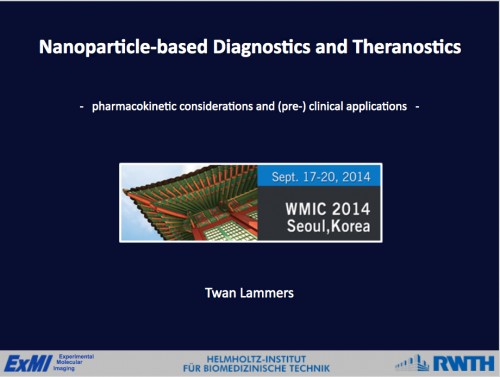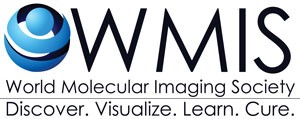Compared to small molecules, nanoparticles feature notable advantages: (1) their modular structure and surface modifications enable multiple functionalities (decreased immunogenicity, targeting, multimodal imaging, therapy, and controlled pharmacokinetics); (2) specific tissues can be targeted passively (e.g., reticuloendothelial system or kidneys), as can many tumors through the enhanced permeability and retention (EPR) effect; (3) nanoparticles can respond to their microenvironment or to external stimuli to provide therapy and contrast only where needed; and (4) different types of therapy can be elicited by the nanoparticles. Fundamental questions to answer are how to direct nanoparticles towards specific excretion pathways (renal, biliary), how to design autodegradable nanoparticles, and how to design synthetic procedures that yield the most nontoxic, most biocompatible formulations, etc.
Basic Considerations on the Use of Particles and Polymers in Molecular Imaging
Hisataka Kobayashi, Molecular Imaging Program, NCI/NIH, Bethesda, Maryland, USA
Talk Outline:
- Basic consideration on nano-materials
- Pharmacokinetics (PK) of nano-sized agents
- Size considerations
- Surface modifications
- Nano-toxicology
- Interaction with proteins
- Immunogenicity
Advances in Particles and Polymers
Sanjiv Gambhir, Stanford University, California, USA
Talk Outline:
- Background on Nanoparticles
- Unique Solutions Provided by Nanoparticles
- Features of Nanoparticles
- Specific Pre-clinical Examples
- Clinical Studies
- Future Directions
Nanoparticle-based diagnostics and theranostics: Pharmacokinetic considerations and (pre-) clinical applications
Twan Lammers, Experimental Molecular Imaging, RWTH Aachen University, Aachen, Germany
Learning Objectives:
- Pharmacokinetic properties of nanoparticles
- Applications of diagnostic and theranostic nanoparticles
- Theranostic concepts to individualize and improve interventions

Please click the slide image to open and view the presentation. Please note- the slides in the presentation can be advanced using the navigation controls on the presentation frame.
Targeted particles and polymers
Sjoerd Hak, Department of Circulation and Medical Imaging, Norwegian University of Science and Technology, Trondheim, Norway
Talk Outline:
- General targeting and imaging strategies
- Ligand coupling and characterization
- Application: Reaching the target
